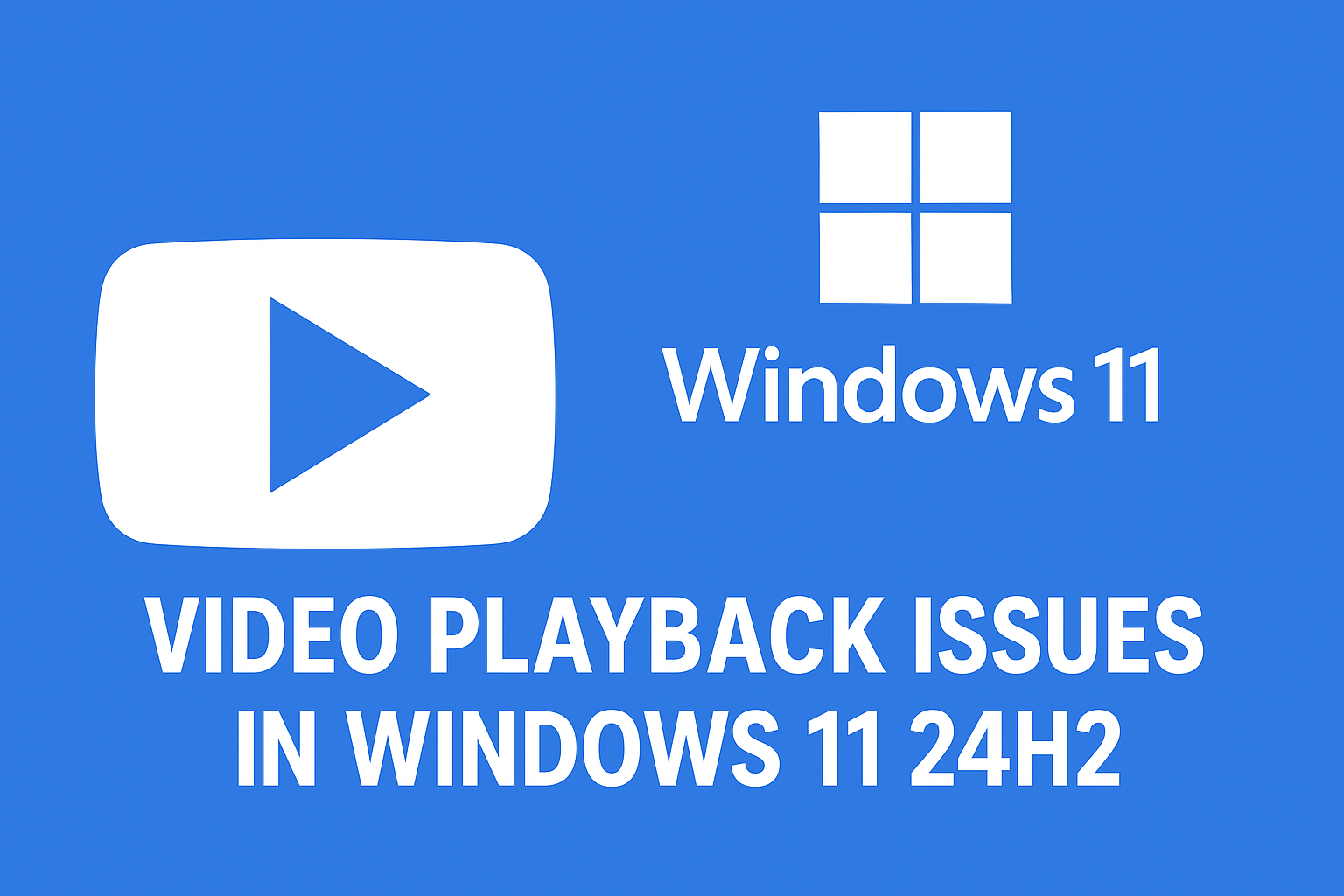
The Ultimate Guide to Finding the Best Free Keyword Research Tool for SEO Success
: A Comprehensive Thesis
Abstract: This article posits that sophisticated keyword research is the foundational pillar of a successful Search Engine Optimization (SEO) strategy and that, contrary to popular belief, this foundation can be effectively built using free keyword research tools. We will deconstruct the process, proving that a strategic approach to free tools can yield a competitive advantage, drive targeted organic traffic, and facilitate sustainable online growth without the initial financial investment in premium software. This thesis will explore the psychological and algorithmic imperatives of keyword research, establish a rigorous framework for evaluating free tools, delve into the technical mechanics of how they function, and present advanced strategic applications, including the innovative use of WordPress-based plugins to create value-added web properties.
Table of Contents
- Introduction: The Digital Cartographer’s Compass
- 1.1. The Problem of Invisibility in a Noisy Digital Landscape
- 1.2. Thesis Statement: The Empowering Potential of Free Keyword Research Tools
- 1.3. Demystifying the “Free vs. Paid” Dichotomy
- Chapter 1: The Non-Negotiable Imperative of Keyword Research – Beyond Guessing, Into Strategy
- 1.1. Understanding User Intent: The Core of Modern SEO
- 1.1.1. The Four Pillars of User Intent: Informational, Navigational, Commercial, and Transactional
- 1.1.2. Mapping Content to Intent: The Critical Role of Keyword Selection
- 1.2. The Economic Rationale: Maximizing ROI on Content and Advertising
- 1.2.1. Lowering Customer Acquisition Cost (CAC) with Precision Targeting
- 1.2.2. Informing Content Strategy to Reduce Wasted Resources
- 1.3. The Competitive Intelligence Dimension
- 1.3.1. Reverse-Engineering Competitor Success
- 1.3.2. Identifying Market Gaps and Unmet Audience Needs
- 1.1. Understanding User Intent: The Core of Modern SEO
- Chapter 2: Deconstructing the Toolbox – A Rigorous Framework for Evaluating Free Keyword Research Tools
- 2.1. Core Data Metrics: What to Look For and What They Truly Mean
- 2.1.1. Search Volume: Understanding Trends, Seasonality, and Averages
- 2.1.2. Keyword Difficulty (KD): A Multifaceted Metric of Competition
- 2.1.3. Cost-Per-Click (CPC) Data: A Proxy for Commercial Value and User Intent
- 2.1.4. SERP Features: The Impact of Featured Snippets, People Also Ask, and Local Packs
- 2.2. Functionality and Usability: The User Experience of Discovery
- 2.2.1. Related Keyword and Question Discovery: Expanding the Semantic Horizon
- 2.2.2. Filtering and Sorting Capabilities: From Data Overload to Actionable Insights
- 2.2.3. Export Options: Integrating Research into Broader Workflows
- 2.3. Limitations and Data Accuracy: A Realistic Appraisal of Free Tiers
- 2.3.1. Data Sampling and Estimation Techniques
- 2.3.2. Query Limitations and Rate Throttling
- 2.3.3. Geographic and Linguistic Constraints
- 2.1. Core Data Metrics: What to Look For and What They Truly Mean
- Chapter 3: The Engine Room – How Free Keyword Tools Actually Work
- 3.1. The Role of Search Engine APIs and Public Data
- 3.1.1. Google’s Suite of APIs (e.g., Google Trends, Autocomplete)
- 3.1.2. The Limitations and Creative Workarounds for Data Scraping
- 3.2. Algorithmic Estimation: Simulating Search Volume and Competition
- 3.2.1. Modeling Search Volume from Available Data Points
- 3.2.2. Calculating Keyword Difficulty: Analyzing Competitor Authority and On-Page Signals
- 3.3. Linguistic and Semantic Analysis for Keyword Expansion
- 3.3.1. Morphological Variants: Plurals, Tenses, and Stemming
- 3.3.2. Synonym Recognition and Thesaurus Integration
- 3.3.3. Intent-Based Clustering: Grouping Keywords by User Goal
- 3.1. The Role of Search Engine APIs and Public Data
- Chapter 4: The WordPress Advantage – Leveraging a Keyword Research Tool as a Value-Added Asset
- 4.1. The Strategic Shift: From User to Provider
- 4.2. Case Study: Implementing the “Free Keyword Research Tool” WordPress Plugin
- 4.2.1. Technical Implementation and User Interface Considerations
- 4.2.2. Curating the User Experience for Maximum Engagement
- 4.3. Tangible Benefits for the Website Owner
- 4.3.1. Enhanced User Engagement and Reduced Bounce Rates
- 4.3.2. Building Brand Authority and Trust in the SEO/Marketing Niche
- 4.3.3. Earning Organic Backlinks Through Utility and Resourcefulness
- 4.3.4. Generating Qualified Leads for Consultancy or Affiliate Marketing
- Chapter 5: The Strategist’s Playbook – Advanced Techniques for Maximizing Free Tools
- 5.1. The Long-Tail Keyword Philosophy: Specificity, Intent, and Conversion
- 5.1.1. Identifying and Prioritizing Long-Tail Opportunities
- 5.1.2. Creating Content Hubs Around Topic Clusters
- 5.2. Dynamic and Seasonal Keyword Tracking
- 5.2.1. Building a Living Keyword Database
- 5.2.2. Capitalizing on Trends and Evergreen Content Cycles
- 5.3. The Content Optimization Loop: Auditing and Updating Based on Performance
- 5.3.1. Identifying Underperforming “Zombie” Content
- 5.3.2. The Art of Content Refreshing and “Topical Authority” Building
- 5.4. The Ethical Imperative: Avoiding Keyword Stuffing and Focusing on User-Centricity
- 5.1. The Long-Tail Keyword Philosophy: Specificity, Intent, and Conversion
- Conclusion: Building a Sustainable SEO Empire on a Free Foundation
- 7.1. Synthesizing the Argument: Clarity, Not Cost, is King
- 7.2. The Continuous Cycle of Research, Creation, and Optimization
- 7.3. Final Thoughts: Empowering the Everyman Marketer
Article Body (Expanded from Thesis Outline)
1. Introduction: The Digital Cartographer’s Compass
The internet is the modern Library of Alexandria, but without a map, its treasures remain hidden. For businesses, bloggers, and creators, this invisibility is an existential threat. The central problem is not a lack of content, but a surplus of content that fails to connect with its intended audience. It is a digital cacophony where only the most strategically amplified voices are heard.
This article posits a powerful thesis: Sophisticated keyword research, achievable through the strategic use of free tools, is the most critical and accessible lever for achieving SEO success. It is the compass that guides content creators through the wilderness of the web, directly to their target audience. The long-standing dichotomy between “free” and “paid” tools is often misleading; the true differentiator is not the price tag but the strategist’s understanding of the data and its application. This guide will demonstrate that free keyword research tools, when used with precision and insight, provide more than enough firepower to plan, execute, and dominate a niche, ultimately building a sustainable organic growth engine.
2. Chapter 1: The Non-Negotiable Imperative of Keyword Research
To view keyword research as merely a list of terms is to miss its profound strategic value. It is the process of eavesdropping on the collective consciousness of your potential customers.
2.1. Understanding User Intent: The Core of Modern SEO
Google’s algorithms have evolved from simple word-matching machines to sophisticated intent-interpretation engines. The primary goal of any search engine is to satisfy user intent. Therefore, successful SEO must begin here.
- Informational Intent: The user seeks knowledge. Queries like “how to fix a leaky faucet” or “what is blockchain.” Content must be educational and comprehensive.
- Navigational Intent: The user wants to find a specific website or page. “Facebook login,” “Apple support.” The goal here is to own your brand terms.
- Commercial Intent: The user is researching before a purchase. “best running shoes for flat feet,” “iPhone 15 vs. Pixel 8 reviews.” Content should be comparative and detailed.
- Transactional Intent: The user is ready to buy. “buy Nike Air Max online,” “cheap WordPress hosting.” This is the pinnacle of commercial targeting.
A free keyword tool helps you classify keywords by intent, ensuring your content aligns perfectly with what the user expects to find. Creating a commercial guide for a transactional query is a wasted effort, just as a simple “buy now” page will fail for an informational query.
2.2. The Economic Rationale
From a business perspective, keyword research is a fundamental cost-saving and ROI-maximizing activity.
- Lowering CAC: By targeting precise, long-tail keywords with clear intent, you attract visitors who are further down the sales funnel. This organic traffic has a much lower acquisition cost than paid advertising. A blog post answering a very specific problem can generate qualified leads for years.
- Informing Content Strategy: Creating content is resource-intensive. Keyword research validates ideas before a single word is written, ensuring that time and money are invested in topics with a proven audience. It prevents the creation of “content for content’s sake” that attracts no traffic.
2.3. The Competitive Intelligence Dimension
Free tools allow you to perform a basic SWOT analysis (Strengths, Weaknesses, Opportunities, Threats) on your competitors.
- Reverse-Engineering Success: By analyzing the keywords for which your competitors rank, you can understand their content strategy. What topics do they own? What is their backlink profile like?
- Identifying Market Gaps: Often, you will find “keyword gaps”—terms your competitors are ranking for, but where their content is thin, outdated, or unsatisfying. This is a golden opportunity to create a superior resource and capture that traffic.
3. Chapter 2: Deconstructing the Toolbox – A Framework for Evaluation
Not all free tools are created equal. A strategic evaluation is necessary to select the right instrument for the job.
3.1. Core Data Metrics
- Search Volume: This is typically a monthly average. A critical insight is to use Google Trends in conjunction with this number to understand seasonality. The keyword “Christmas gifts” has a high average volume but is useless for most of the year without a seasonal plan.
- Keyword Difficulty (KD): This score, usually from 0-100, is an algorithm’s estimate of how hard it would be to rank on the first page. A sophisticated user looks beyond the number. A KD of 80 might be achievable if you have a strong domain authority in that niche, while a KD of 20 might be impossible if you’re a new site targeting a term dominated by Amazon and YouTube. The tool provides a hint; your judgment makes the decision.
- Cost-Per-Click (CPC): While directly relevant for PPC, CPC is a powerful indicator of commercial intent for SEO. A high CPC suggests that the keyword has significant monetary value to advertisers. Targeting high-CPC keywords with organic content can be incredibly lucrative.
- SERP Features: Modern free tools often show which “SERP features” (like Featured Snippets, “People Also Ask” boxes, image packs, local maps) are present for a keyword. This is crucial. If the SERP is dominated by a Featured Snippet, your goal should be to create content specifically designed to win that snippet, which may require a different format than a standard blog post.
3.2. Functionality and Usability
- Related Keyword Discovery: The best tools go beyond synonyms. They provide questions (“how to,” “what is”), prepositions (“for,” “with,” “near me”), and related entities. This is the fuel for content ideation.
- Filtering and Sorting: The ability to filter by KD, volume, intent, and the presence of SERP features is what transforms a data dump into an actionable list.
- Export Options: The ability to export to CSV or Excel is non-negotiable for serious research, allowing for further analysis, sharing, and integration into content calendars.
3.3. Limitations and Data Accuracy
A professional understands the constraints. Free tools often use data models based on samples. Their search volume is an estimate. Their KD score is a proprietary calculation. The key is consistency. Use the same tool to compare keywords against each other. The relative values are often more important than the absolute numbers.
4. Chapter 3: The Engine Room – How Free Tools Work
Understanding the mechanics demystifies the data and builds trust in the outputs.
4.1. The Role of APIs and Public Data
Most free tools cannot afford the massive costs of the Google Search Console API. Instead, they creatively leverage free, public data sources:
- Google Autocomplete: Provides real-time, popular search suggestions.
- Google Related Searches: Offers a list of queries related to the original search.
- Google Trends: Provides comparative volume data and trending topics.
By aggregating and processing this data, tools can build a robust picture of the keyword landscape.
4.2. Algorithmic Estimation
How does a tool estimate search volume without direct access to Google’s data? It uses correlation and machine learning. By comparing the frequency of a keyword in its own data set (from tool usage, scraped SERPs, etc.) with known data points, it can build a model to predict volume. Similarly, Keyword Difficulty is calculated by analyzing the top 10 ranking pages for that term. The tool assesses the Domain Authority, Page Authority, number of backlinks, and content quality of those pages to generate a composite “difficulty” score.
4.3. Linguistic and Semantic Analysis
To generate related terms, tools use Natural Language Processing (NLP). They don’t just have a giant thesaurus; they understand word relationships. They can identify that “running,” “jogging,” and “sprinting” are semantically related, and that “best shoes for running” has a similar intent to “top running footwear.” This allows for intelligent, intent-based keyword expansion.
5. Chapter 4: The WordPress Advantage
This is a paradigm shift from being a consumer of tools to a provider of utility. By installing a dedicated keyword research plugin on your WordPress site, you transform your website from a passive repository of content into an interactive, value-generating platform.
5.1. The Strategic Shift
You are no longer just using a tool for your own SEO; you are offering an SEO service. This is a powerful trust-building mechanism, particularly for marketing agencies, SEO consultants, and affiliate review sites.
5.2. Case Study: Implementation
A plugin like the one developed by Muhammad Anas Abbas provides a seamless user experience. A visitor arrives on your site, finds the tool, and enters a keyword. The plugin, likely connected to a third-party API or using the methods described in Chapter 3, returns a formatted report with difficulty, volume, CPC, and related terms—all without the user leaving your site.
5.3. Tangible Benefits
- Enhanced Engagement: A useful tool keeps users on-site for longer, reducing bounce rates and sending positive behavioral signals to Google.
- Brand Authority: You are perceived as an expert and a helper, not just a seller.
- Organic Backlinks: People naturally link to valuable resources. A free keyword tool is a highly “linkable” asset.
- Lead Generation: The tool can be gated behind an email opt-in, or it can serve as a top-of-funnel touchpoint that warms visitors up to your paid services.
6. Chapter 5: The Strategist’s Playbook – Advanced Techniques
Data is inert without strategy. Here is how to wield free tools like a master.
6.1. The Long-Tail Philosophy
The “Long Tail” is the strategy of targeting a large number of specific, lower-volume phrases that collectively represent the majority of search traffic. These phrases have three key advantages:
- Lower Competition: Easier to rank for.
- Higher Intent: “Buy blue widget model X in Los Angeles” is far more valuable than “widgets.”
- Higher Conversion Rate: The searcher knows exactly what they want.
Use free tools to mine for these phrases by starting with a broad “seed” keyword and drilling down into the questions and prepositions.
6.2. Dynamic and Seasonal Tracking
SEO is not a one-time event. Use free tools to build a master keyword database in a spreadsheet. Revisit it quarterly. Use Google Trends to identify seasonal spikes for your keywords and plan your content calendar accordingly. An article about “winterizing your garden” should be published and promoted in late summer, not December.
6.3. The Content Optimization Loop
The work doesn’t end after publication. Use Google Search Console (a free tool) to identify which keywords your existing content is already getting impressions for, but where you are not ranking in the top positions. Take these keywords back to your free research tool. Analyze the competition. Then, systematically update and improve that existing content to target those terms more effectively. This “content refreshing” strategy often yields faster results than creating new content from scratch.
6.4. The Ethical Imperative
Finally, the ultimate strategy is quality. Google’s algorithms are increasingly adept at understanding context and user satisfaction. Keyword stuffing is a relic of the past. Use your research to create content that genuinely, and thoroughly, satisfies the query. Your goal is to be the best answer, not just the most optimized one.
7. Conclusion: Building a Sustainable SEO Empire on a Free Foundation
The journey through the world of free keyword research tools reveals a clear path to SEO success. It begins with a fundamental shift in perspective: viewing these tools not as limited substitutes for premium options, but as powerful instruments in their own right. Their value is unlocked not by their cost, but by the clarity of thought and strategic rigor of the user.
We have established that keyword research is the non-negotiable bedrock of understanding user intent, driving economic efficiency, and gaining competitive intelligence. We have deconstructed the tools themselves, providing a framework for evaluation and a behind-the-scenes look at their operation to foster intelligent use. We have explored an advanced paradigm—the WordPress-based tool—that turns a tactical asset into a strategic advantage. And finally, we have outlined a playbook of advanced techniques that allow any marketer, regardless of budget, to compete and win in the search results.
The cycle is continuous: research, create, optimize, and repeat. By embracing this discipline and leveraging the powerful, accessible technology of free keyword research tools, any individual or organization can build a visible, authoritative, and growing online presence. The map to digital success is not locked in a paid subscription; it is available to anyone willing to learn how to read it.
Click Here to use free keyword research tool




















Post Comment